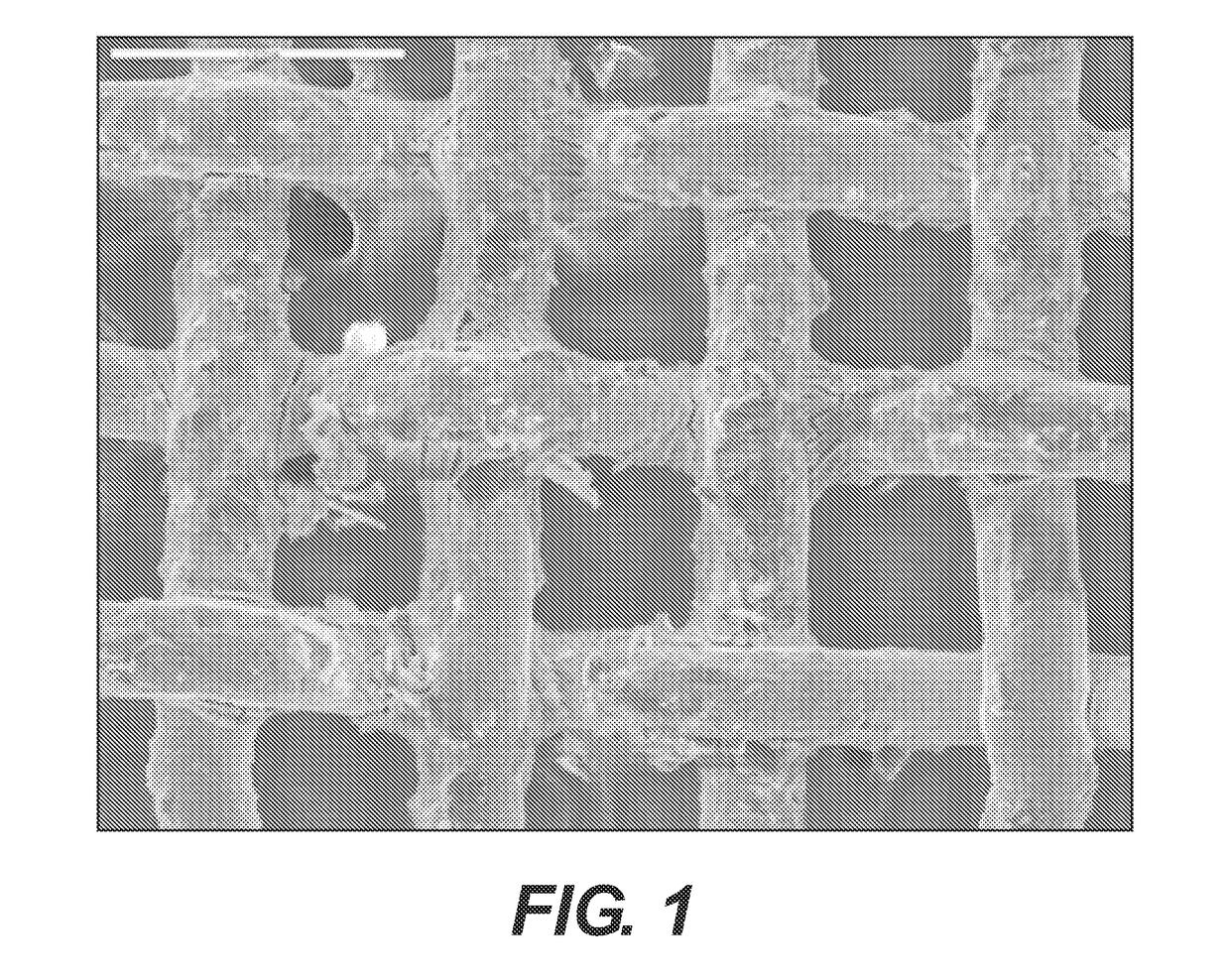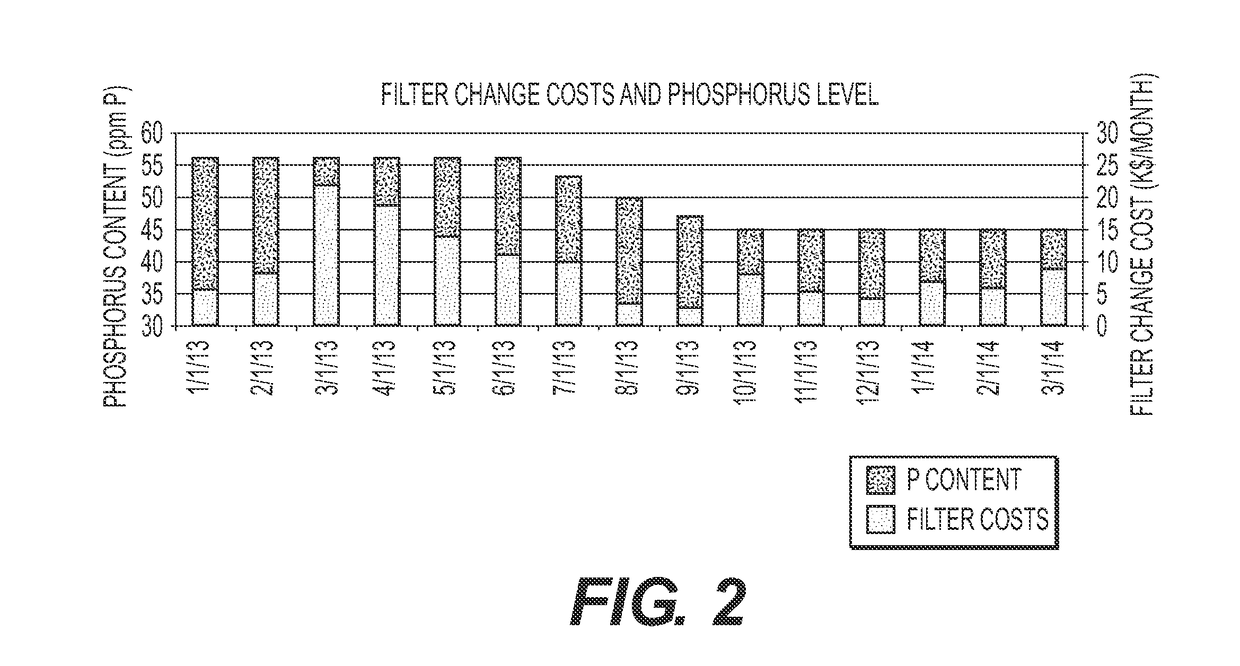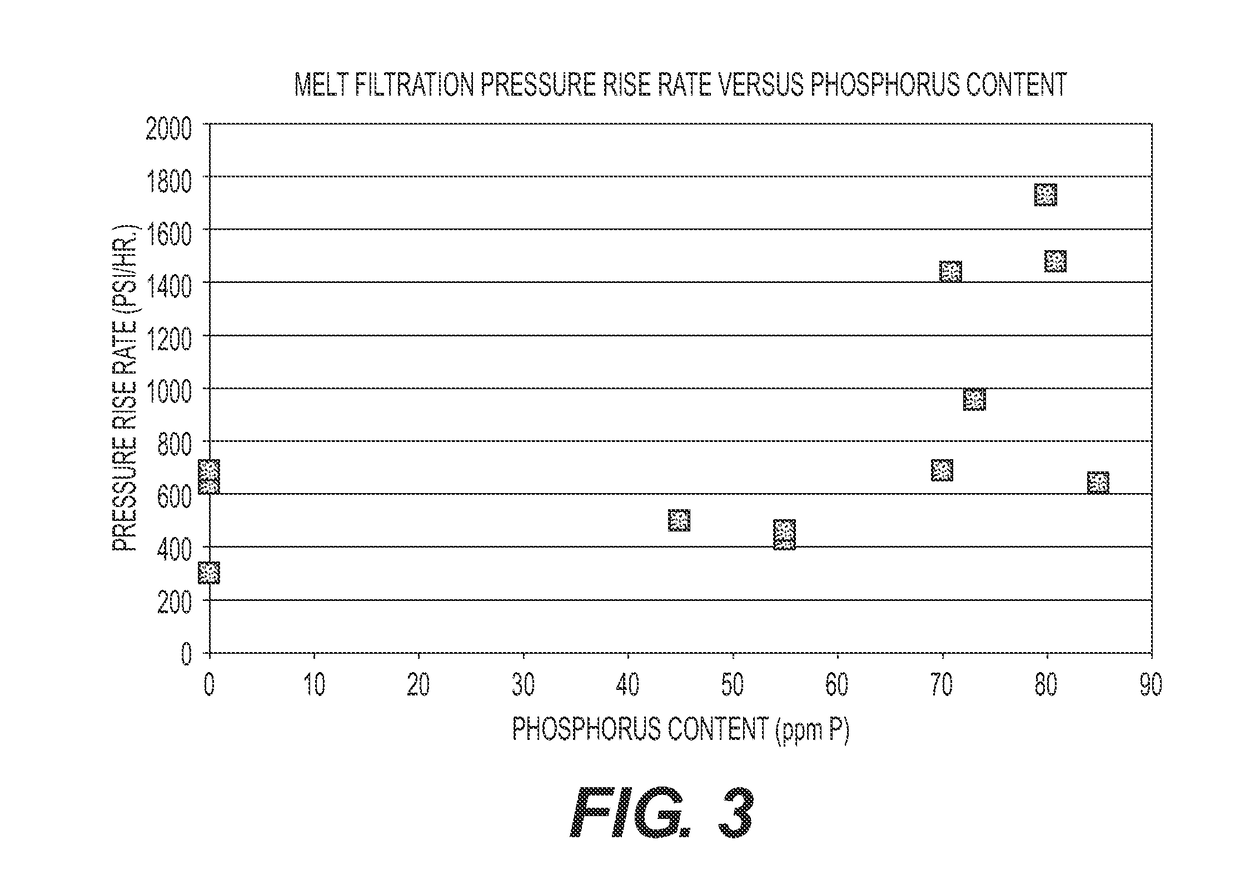Low Phosphorus Low Color Polyamides
a low-phosphorus, polyamide technology, applied in the field of low-phosphorus low-color polyamides, can solve the problems of increasing yellowness and varying degrees of redness of resins, and achieve the effect of improving melt stability and low deposition
- Summary
- Abstract
- Description
- Claims
- Application Information
AI Technical Summary
Benefits of technology
Problems solved by technology
Method used
Image
Examples
examples / experimental
Examples / Experimental Results
[0045]There are several aspects relating to the use of phosphorus-containing compounds in the production of polyamides. Phosphorus-containing compounds are used to improve color and to act as catalysts to achieve improved polymerization rates. Negative consequences associated with the use of certain phosphorus-containing compounds include the deposition of condensed polyphosphates in polymerization equipment, the lack of RV control during injection molding, and a reduction in the physical properties of articles molded from materials containing these phosphorus-containing compounds.
[0046]Thus, the use of a phosphorus-containing compound in the manufacture of polyamides such as nylon requires a balancing between the desired improvement in the color of the polyamide and the undesired toll on the polymerization equipment. Assessment of wear on the polymerization equipment was measured by filter life and the degree of die drooling (i.e., deposits forming adja...
PUM
| Property | Measurement | Unit |
|---|---|---|
| weight | aaaaa | aaaaa |
| yellowness | aaaaa | aaaaa |
| color | aaaaa | aaaaa |
Abstract
Description
Claims
Application Information
 Login to View More
Login to View More - R&D
- Intellectual Property
- Life Sciences
- Materials
- Tech Scout
- Unparalleled Data Quality
- Higher Quality Content
- 60% Fewer Hallucinations
Browse by: Latest US Patents, China's latest patents, Technical Efficacy Thesaurus, Application Domain, Technology Topic, Popular Technical Reports.
© 2025 PatSnap. All rights reserved.Legal|Privacy policy|Modern Slavery Act Transparency Statement|Sitemap|About US| Contact US: help@patsnap.com



